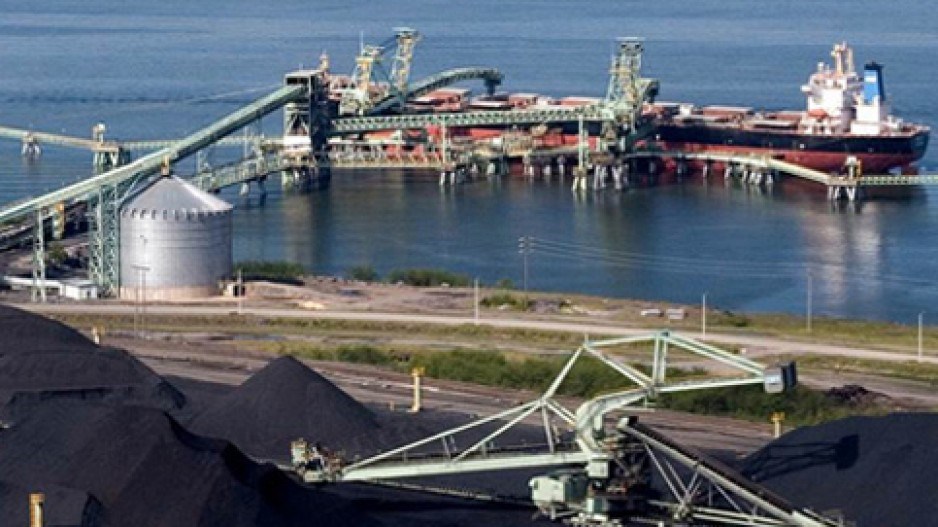Continued strong global demand for steelmaking coal, especially in China and India, may be behind two new coal mine proposals in B.C.
Conuma Coal Resources Ltd. recently filed an application with the B.C. Environmental Assessment Office (EAO) to expand its current operations in the Chetwynd-Tumbler Ridge area, and Australian coal miner Allegiance Coal Ltd. (ASX:AHQ) is now in the early stages of an environmental assessment for a new mine near Smithers, B.C.
Australia and B.C. are among the world’s top metallurgical (“met”) coal producers. Unlike thermal coal, used to produce power, metallurgical coal is used to make steel. Met coal – also called coking coal – competes with lumber as B.C.’s biggest, most valuable export commodity, sometimes surpassing it in value.
Exports of met coal from B.C. hit $7.4 billion in 2018, according to BC Stats, surpassing the value in 2011, when coal exports peaked at $7.1 billion.
Following a steelmaking coal price crash between 2015 and 2016, the value of coal exports from B.C. dropped by more than half, from $7 billion in 2011, when met coal prices reached close to US$300 per tonne, to $3 billion in 2015.
Current met coal prices are around US$190 per tonne, which may explain why companies are now pushing forward expansions and greenfield projects.
“The market can definitely absorb the production of the mines,” said Wood Mackenzie coal analyst Tony Knutson. “We need new projects going forward. There has been a lack of investment.”
Conuma is the U.S. company that rescued three idled met coal mines in 2015 when it acquired them from Walter Energy, which went bankrupt following the coal price crash.
One by one, Conuma reopened all three former Walter Energy mines, which now employ close to 1,000 workers. The company now plans to develop a fourth mine, called the Hermann project, as a satellite to its Wolverine mine. Last week, Conuma applied to the EAO for permission for the new pit, located 26 kilometres from the Wolverine operation.
The additional pit would add seven years to the Wolverine processing plant, to give it a total lifespan of 22 years. Conuma says the new pit would produce 1.5 million to three million tonnes of met coal per year.
Under a previous owner, Western Canadian Coal Corp., the Hermann mine was permitted in 2005 but was never developed.
“We expect that we would be mining and producing coal in probably the end of the first quarter of 2021,” said Conuma CEO Brian Sullivan.
As for Allegiance Coal, its flagship development project is the Tenas mine – also known as the Telkwa – near Smithers. The mine would produce 240,000 to 900,000 tonnes of coal per year and would employ 240 miners.
That is a small operation compared with Teck Resources (TSX:TECK.B), which produces 26 million tonnes per year at its mines in B.C. and Alberta, or even Conuma, which produces about six million tonnes annually.
“That one’s interesting because it’s not one of the typical mining areas right now,” Knutson said. “It’s not a traditional area for coal mining, but it doesn’t mean it can’t be.”
The Tenas project has access to rail and ports, which is a “huge” advantage, Knutson said.
The company filed a project description last year and will file a formal EAO submission in the fourth quarter of this year. It does not expect a permitting decision until early 2021.
With the 2015 crash still fresh in mind, the industry no doubt will be keeping a close eye on China and India, as well as its competitors. One of the things that precipitated the price crash of 2015 was an oversupply of met coal, mostly from Australia.
Knutson said Wood Mackenzie expects coal prices to temper somewhat, to about US$150 per tonne, which is still strong enough to support the development of new mines. He doesn’t expect the kind of sudden price crash of 2015 that shocked the industry.
Whereas China is the biggest market for met coal, India is expected to become a major market in the longer term.
“India will drive the long-term coking coal demand globally,” Knutson said. “They’re kind of doing what China did before in building up their infrastructure. It takes a lot of coking coal and steel.”
As for Teck, B.C.’s biggest met coal producer, the company is winding down two of its mines – one in B.C. and one in Alberta.
Its Coal Mountain mine in the Elk Valley is now in care and maintenance and is being decommissioned, having exhausted its coal reserves. Teck also plans to close its Cardinal River mine in Alberta next year.
That will leave the company with four operating mines in B.C. in the Elk Valley, which still has an abundance of coal. It also owns the Quintette mine near Tumbler Ridge, which has been in care and maintenance since 2000. Teck planned to restart it in 2014, but it put that project on hold.




